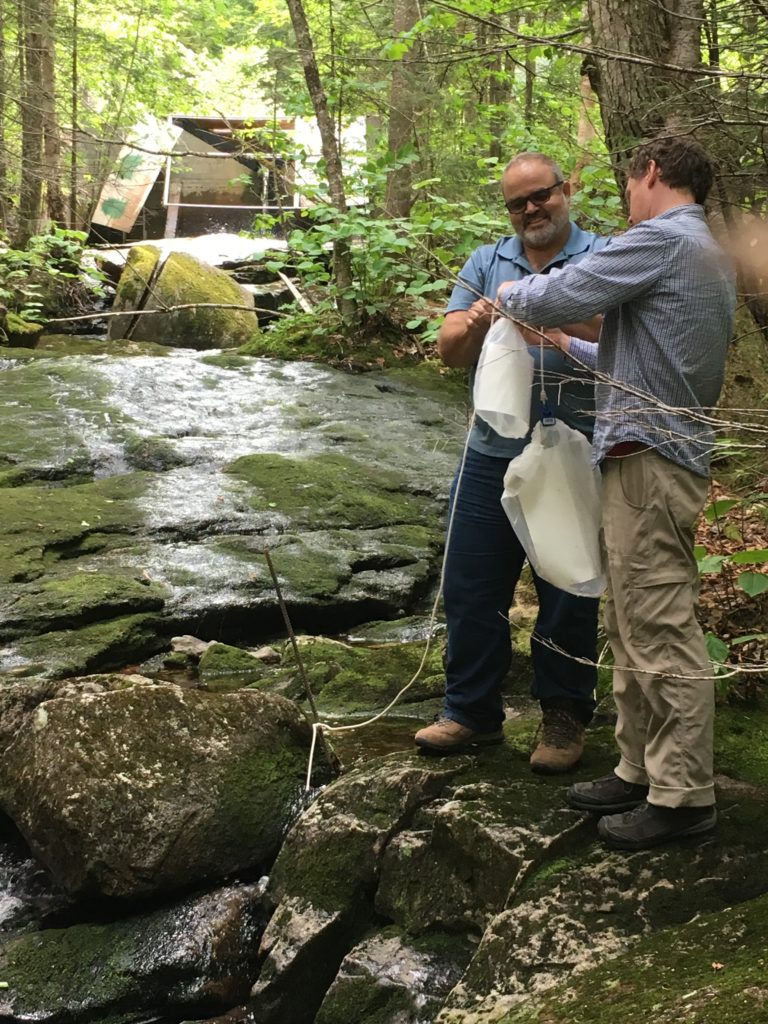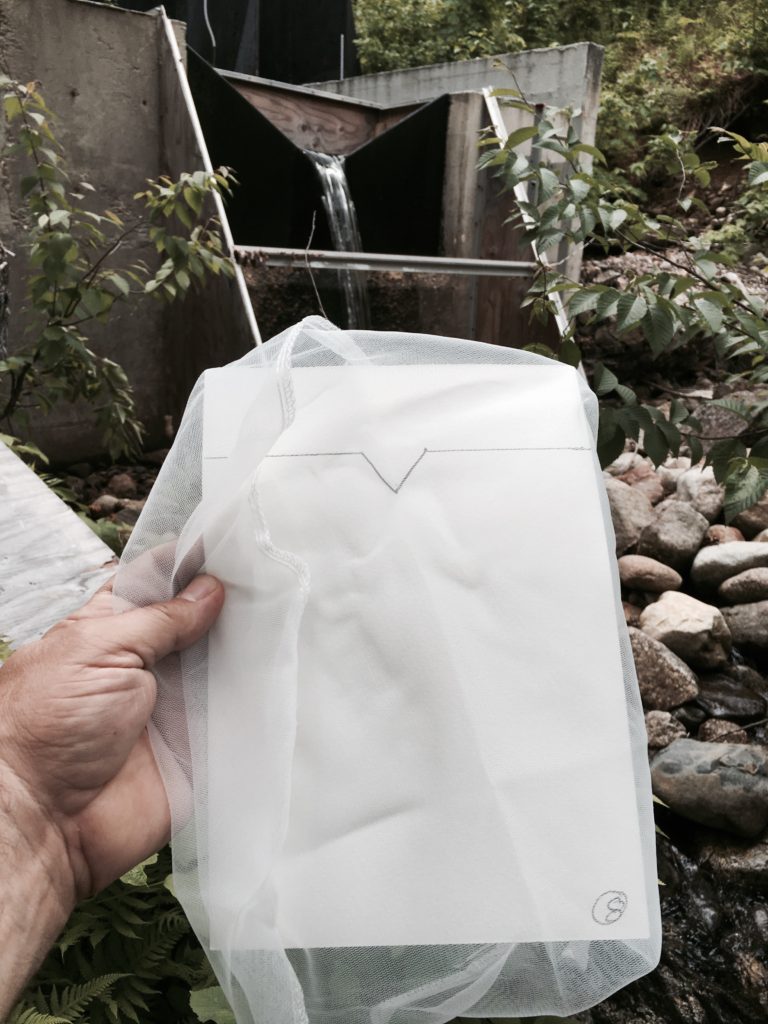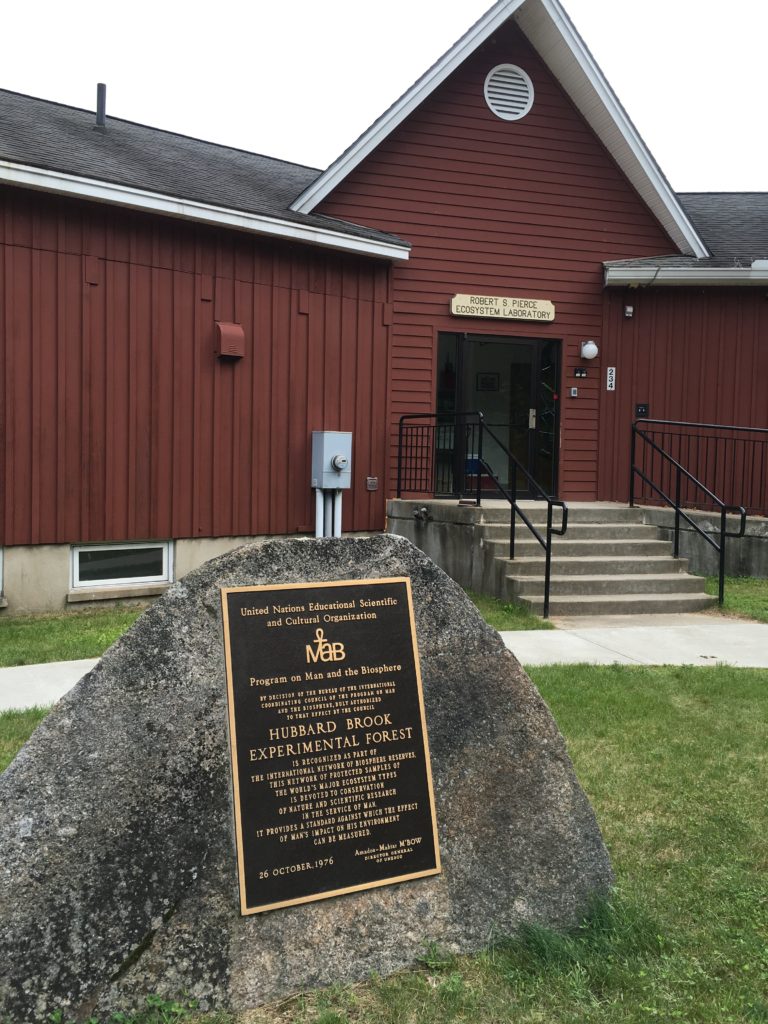Home » CLIMA 2016 | Hubbard Brook
Cortada works: Do Not Open | Climate Refugees | Hot for Hialeah | Psychoanalysis of Climate Change | Reclamation Project | Flor 500
LTER : Everglades (Florida) | HJ Andrews (Oregon) | Hubbard Brook (New Hampshire)
Hubbard Brook Experimental Forest and LTER
WATER VISUALIZATION

WaterViz for Hubbard Brook depicts the hydrologic processes occurring in a small watershed at the Hubbard Brook Experimental Forest. It does so in real time. The work started in 2012 as a cooperative and interdisciplinary project between Xavier Cortada and the scientists at Hubbard Brook—since then its has included various partnering organizations.
It represents the nexus between the hydrologic sciences, visual arts, music, and information design. Hydrologic data, captured from a small watershed at the Hubbard Brook Experimental Forest in the White Mountains of New Hampshire using an array of environmental sensors, is transmitted to the internet and used to drive a computer model that calculates all components of the water cycle for the catchment in real time.
These data, in turn, drive artistic visualizations and sonifications of the water cycle, reflecting the hydrologic processes occurring at that moment in time. It is our hope that these information expressions will allow people anywhere in the world to better understand the dynamic inputs, outputs, and storage of water in this small, upland forested watershed as they are occurring.
Learn more at http://waterviz.org (do not use “www”)
WATER PAINTINGS

Xavier Cortada works with Hydrologist Mark Green to create “Water Paintings” at Hubbard Brook Experimental Forest.


Xavier Cortada, “Water Paintings: Hubbard Brook,” paper and residue captured from water flowing from each of the 9 weirs at the Hubbard Brook Experimental Forest LTER in New Hampshire, 2016
Hubbard Brook scientists pioneered the small watershed approach, which transformed the study of forests by using whole watersheds as living laboratories. This ground-breaking approach fostered many new discoveries beneficial to both science and society.
Small first-order watersheds can show us how ecosystems respond to environmental change. Chemical concentrations combined with stream flow provides data on stream-water element flux for each watershed.
Water samples and data collected by scientists over a 16-week period from all nine watersheds hang on the walls CLIMA.
Nine sets of “Water Paintings” hang from the ceiling. Cortada created each using the same water scientists study. He placed watercolor paper in mesh and tied it to a rope in each of the nine weirs. The works depict 4 months of streamflow.
About the Hubbard Brook Experimental Forest and LTER
The Hubbard Brook Experimental Forest (HBEF) is a 3,160 hectare reserve located in the White Mountain National Forest operated by the USDA Forest Service, near Woodstock, New Hampshire. The on-site research program is dedicated to the long-term study of forest and associated aquatic ecosystems. It has produced some of the most extensive and longest continuous data bases on the hydrology, biology, geology and chemistry of a forest and its associated aquatic ecosystems.
Hubbard Brook scientists pioneered the small watershed approach, which transformed the study of forests by using whole watersheds as living laboratories. This ground-breaking approach fostered many new discoveries beneficial to both science and society.
Hubbard Brook scientists discovered acid rain in North America by taking meticulous, long-term measurements of rain and snow. Scientists continue to document acid rain’s damaging effects and track recovery linked to pollution reduction efforts.
Learn more at http://www.hubbardbrook.org

Hubbard Brook Experimental Forest
Special thanks to the entire Hubbard Brook team, the USDA Forest Service, Dr. Lindsey Rustad, Hydrologist Mark Green, Sr. Researcher Tammy Wooster, Amey Bailey, Marty Quinn, and Mary Martin.

